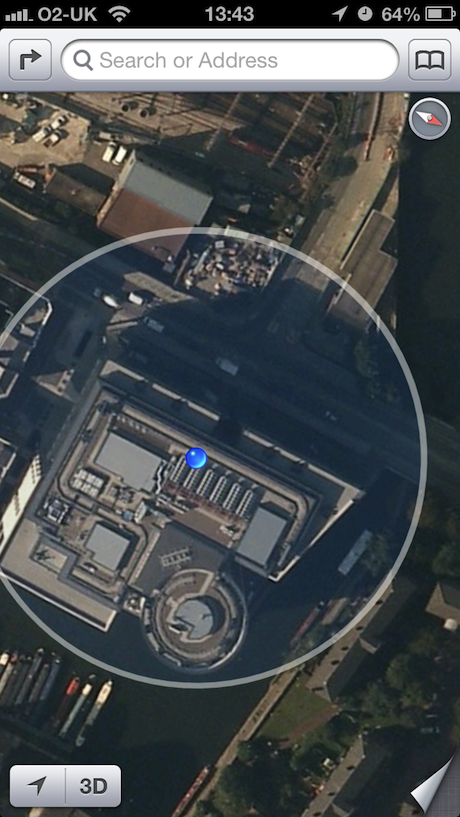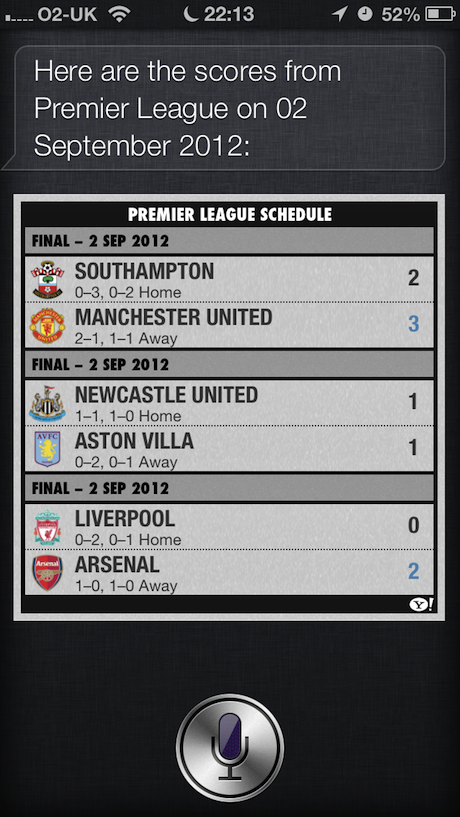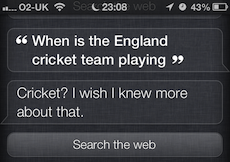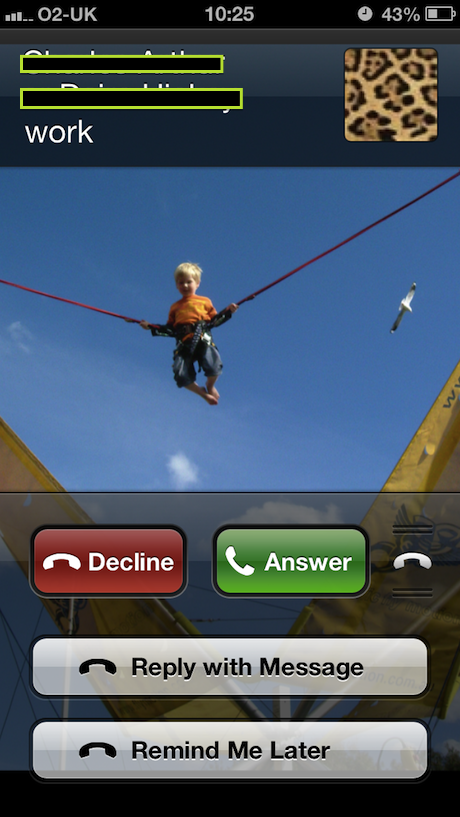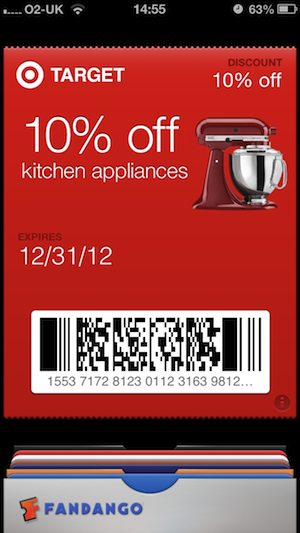Samsung Galaxy SIII Review
HARDWARE
Under the hood you have a Qualcomm 1.5GHz dual core Snapdragon S4 processor. The sad part is that a lot of other phones outside the U.S. are coming packed with quad-core processor but when you really look at it, you aren’t missing those 2 extra cores too much. It can launch apps, watch hi-definition videos, load up websites and handle multitasking without even hiccupping.
The S III also features 2GB of RAM, unlike the 1GB RAM setup found in the One X. But, while the S III clearly had plenty of horsepower, I saw no discernible power advantage over the One X. Both are fantastic performers and equally top-of-class in this regard.
The size of the device is starting to move into the fabled phablet (phone/tablet hybrid) as it doesn’t shy away from its massive screen size and still keep its lightweight design. The S III sports a 4.8-inch, 1280 x 720 pixel, Super HD AMOLED display, which seems massive. The thin bezel around the device keeps the phone from feeling oversize, but it does push the limits on just how big a smartphone should be before we venture into that phablet zone I spoke of earlier. Those of you with smaller hands will venture to say this device is “too big” to use one handed and even I had some trouble but I still was able to manage it.
The display is sharp and bright and some colors feel over bright. Greens, blues and red pop off the screen brighter on the S III than I have seen on other handsets. You also get deep blacks and that makes this device great for watching videos.
I’m also not a fan of the S III’s physical styling. The Pebble Blue and Ceramic White colors the S III is offered in look sharp — the blue especially, which is closer to purple. And the phone’s plastic chassis feels solid, as though it would withstand enough abuse to survive a 2-year contract. But the tooling is all slopes and rounded edges, leaving the handset looking more like a forgettable blob than the flashy flagship phone for the most popular Android maker.
SOFTWARE
The Galaxy S III ships with Google’s Android 4.0 (Ice Cream Sandwich) operating system with Samsung’s ever present TouchWiz user interface. On top of that, Samsung has added a special lock screen that simulates water ripples when you swipe it, and water-themed sound effects are dribbled throughout the phone. Which is fun to play with I must admit. It is like running your finger in water of a puddle when I was a kid.
Apple has Siri and Samsung has something called S Voice. S Voice has been advertised to do certain things Siri couldn’t, like launch a camera app or a voice recording app, however I don’t think I was able to get much out of S Voice. Not sure what the problem was with it but if Samsung wants to compete it had better shape up the S Voice and at least make it comparable to Siri. With the latest release of iOS 6 Siri really got a huge upgrade and S Voice needs to match that.
The other great little feature was Pop Up Play. This allows you to play stored videos on the S III to play in a pop-up window (think picture in picture on a TV) so you can watch a video and perform other tasks at the same time. Worked very well however, I didn’t really see much of a use for it on the handheld screen of a smartphone. If ported to a tablet then I can see a much better use for it.
When it comes to facial recognition on the S III it performs spectacularly. When you take a photo the S III prompts you to identify faces based on contacts from your address book. Once tagged it is easy to shave the photo with the using a feature Samsung calls Buddy Photo Share. Just tape on the person’s face, and the S III presents you with the option of calling the person, share the photo via text, email, or with a social network like Google+ or Facebook.
Now in the commercials you see them using a few features called AllShare and Share Shot. Where you can take a photo and share them with other S III users. Yet, there are some issues with this feature. First with AllShare you can send an invitation to up to 6 other S III devices that are nearby. Those 6 invites must accept them one by one. Also, with AllShare users can see the files you are sharing but they can’t save them.
This is where Share Shot comes into play. Share Shot automatically distributes the photos you are taking by sending them over Wi-Fi to other S III handsets on your local Wi-Fi network. This is where the pain comes in. Users are sent an invite one at a time and each must either accept or decline the invitation, and each must respond before the next user is invited. Imagine you are at a party and you try to share a photo and people have been drinking it can get a bit hectic with the “did you accept?” Everything could be held up by one person who isn’t paying attention to their phone.
Now there is another feature called Group Cast which allows your group invites to accept and invitation independent of others and you can share photos, PDFs, and PowerPoint presentations between phones, but alas you can’t save the documents in this feature.
Samsung also felt the need to fiddle with Google’s built-in Android features. For example the Android-to-Android sharing system called Android Beam that allows two NFC-equipped Android phones to share files when you tap the two devices together. Great idea, right? No need to be fiddled with, right? Well Samsung didn’t feel that way and the S III brings the Android Beam feature and adds the S Beam, which does the same thing as Android Beam, which can only be used between Galaxy S III phones.
Samsung didn’t waste everything with the S III, they did do some really unique things. When you are composing a text message on the S III and then you bring it to your ear, the phone automatically dials the person you were messaging. Smart Stay uses the 1.9-megapixel front camera to detect when you’re looking at the phone or not, so that when you are looking at the phone the screen will remain active and if you look away the screen will dim out as usual.
TecTiles is another fun little addition to the Samsung NFC strategy. TecTiles are tiny stickers with a chip inside of them. Then using an Android app, you program them to perform a specific action, like send a text message or even set up a reminder. You can place these stickers in any physical location, then tap the phone against one to initiate the pre-programmed action. Unlike S Beam, TecTiles will work with any NFC-capable Android Phone, even though TecTiles’ launch was timed to coincide with the debut of the S III.
CAMERA
Every smartphone now a days gets rated on how great the camera is and what all the camera can do and the S III isn’t lacking in this department at all. The rear camera has an 8-megapixel unit with LED flash. Photos aren’t as sharp or as detailed in some other high end smartphones, but they do come close. The camera app also has built-in face detection mode, a burst shot mode and modes for HDR photos, macro shots and panoramas. One feature that was helpful when trying to snap a photo of my 4 year old son is the Smile Shot, which takes a photo anytime someone in the frame smiles
The front facing camera is 1.9-megapixel camera that is capable of handling Skype calling and profile pics but not really much of anything else.
Final Thoughts
The Samsung Galaxy S III is still one of the top phones on the Android Market right now. Some software issues aside the phone still out performs so many other devices. The hardware side alone is mesmerizing enough and some of the other features just need a bit fine tuning and you have yourself a very worthy phone for a while.
SPECIFICATION:
| General | 2G Network | GSM 850 / 900 / 1800 / 1900 |
|---|---|---|
| 3G Network | HSDPA 850 / 900 / 1900 / 2100 | |
| 4G Network | LTE (regional) | |
| Announced | 2012, May | |
| Status | Available. Released 2012, May |
| Body | Dimensions | 136.6 x 70.6 x 8.6 mm |
|---|---|---|
| Weight | 133 g | |
| - Touch-sensitive controls |
| Display | Type | Super AMOLED capacitive touchscreen, 16M colors |
|---|---|---|
| Size | 720 x 1280 pixels, 4.8 inches (~306 ppi pixel density) | |
| Multitouch | Yes | |
| Protection | Corning Gorilla Glass 2 | |
| - TouchWiz UI |
| Sound | Alert types | Vibration; MP3, WAV ringtones |
|---|---|---|
| Loudspeaker | Yes | |
| 3.5mm jack | Yes |
| Memory | Card slot | microSD, up to 64 GB |
|---|---|---|
| Internal | 16/32/64 GB storage, 1 GB RAM |
| Data | GPRS | Class 12 (4+1/3+2/2+3/1+4 slots), 32 - 48 kbps |
|---|---|---|
| EDGE | Class 12 | |
| Speed | HSDPA, 21 Mbps; HSUPA, 5.76 Mbps | |
| WLAN | Wi-Fi 802.11 a/b/g/n, DLNA, Wi-Fi Direct, Wi-Fi hotspot | |
| Bluetooth | Yes, v4.0 with A2DP, EDR | |
| NFC | Yes | |
| USB | Yes, microUSB v2.0 (MHL), USB On-the-go |
| Camera | Primary | 8 MP, 3264x2448 pixels, autofocus, LED flash, check quality |
|---|---|---|
| Features | Simultaneous HD video and image recording, geo-tagging, touch focus, face and smile detection, image stabilization | |
| Video | Yes, 1080p@30fps, check quality | |
| Secondary | Yes, 1.9 MP, 720p@30fps |
| Features | OS | Android OS, v4.0.4 (Ice Cream Sandwich) |
|---|---|---|
| Chipset | Exynos 4412 Quad | |
| CPU | Quad-core 1.4 GHz Cortex-A9 | |
| GPU | Mali-400MP | |
| Sensors | Accelerometer, gyro, proximity, compass, barometer | |
| Messaging | SMS(threaded view), MMS, Email, Push Mail, IM, RSS | |
| Browser | HTML, Adobe Flash | |
| Radio | Stereo FM radio with RDS | |
| GPS | Yes, with A-GPS support and GLONASS | |
| Java | Yes, via Java MIDP emulator | |
| Colors | Pebble blue, Marble white, Amber brown, Garnet red, Sapphire black, Titanium grey | |
| - MicroSIM card support only - S-Voice natural language commands and dictation - Smart Stay eye tracking - Dropbox (50 GB storage) - Active noise cancellation with dedicated mic - TV-out (via MHL A/V link) - SNS integration - MP4/DivX/XviD/WMV/H.264/H.263 player - MP3/WAV/eAAC+/AC3/FLAC player - Organizer - Image/video editor - Document viewer (Word, Excel, PowerPoint, PDF) - Google Search, Maps, Gmail, YouTube, Calendar, Google Talk, Picasa integration - Voice memo/dial/commands - Predictive text input (Swype) |
| Battery | Standard battery, Li-Ion 2100 mAh | |
|---|---|---|
| Stand-by | Up to 590 h (2G) / Up to 790 h (3G) | |
| Talk time | Up to 21 h 40 min (2G) / Up to 11 h 40 min (3G) |
| Misc | SAR US | 0.55 W/kg (head) 1.49 W/kg (body) | |||
|---|---|---|---|---|---|
| SAR EU | 0.21 W/kg (head) |
| Tests | Display | Contrast ratio: Infinite (nominal) / 3.419:1 (sunlight) |
|---|---|---|
| Loudspeaker | Voice 75dB / Noise 66dB / Ring 75dB | |
| Audio quality | Noise -90.3dB / Crosstalk -92.6dB | |
| Camera | Photo / Video | |
| Battery life | Endurance rating 43h |
For more reviews,
Stay connected or SUBSCRIBE above.





